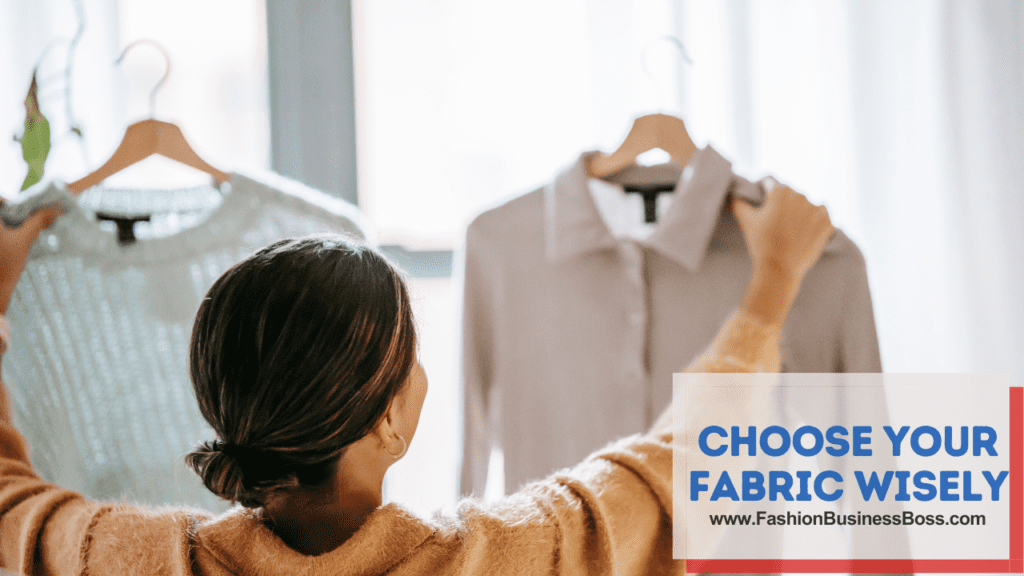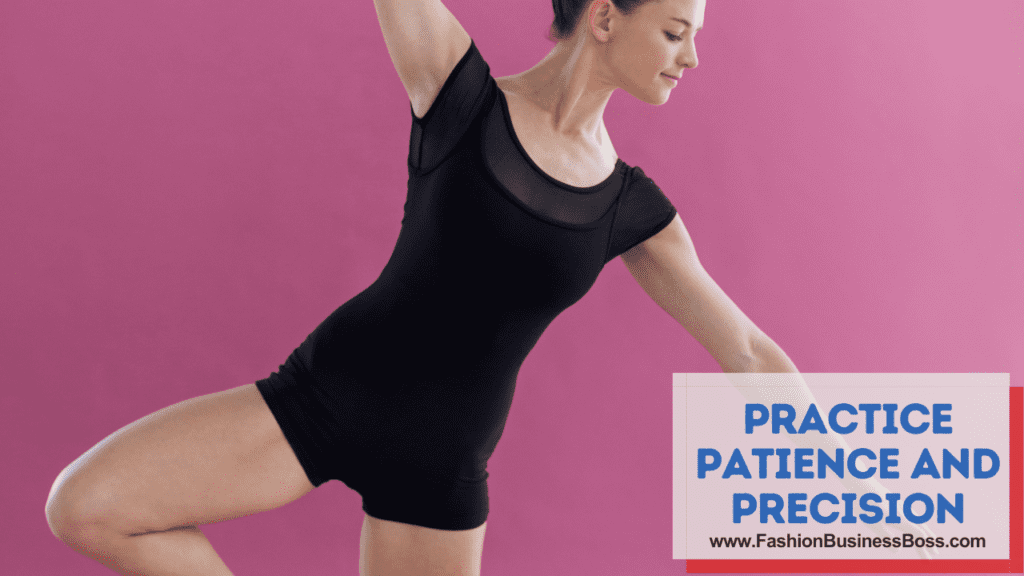The art of crafting your own clothes – a journey that combines creativity, self-expression, and practicality. Whether you’re an experienced seamstress or a novice with a needle and thread, patience is the key to excel in this industry.
Here are some key steps to make and design your own clothes: Start by gathering inspiration, assemble your toolkit, learn the basics of sewing, choose the right fabric, and experiment with design elements to create unique garments. Enjoy the journey of self-expression through fashion.
In this article, we will help you embark on the exciting adventure of making and designing your own garments.
Get Inspired

Finding inspiration is a crucial and fundamental step when venturing into the world of making and designing your own clothes. It’s akin to gathering the building blocks for your creative journey. To embark on this process, there are several accessible avenues you can explore.
One effective method is to peruse fashion magazines. These publications are a treasure trove of diverse styles, colors, and fabrics. Another valuable resource is Pinterest, an online platform teeming with visual ideas and trends. Consider following your favorite fashion designers on social media, as this allows you to stay updated on the latest trends and designs.
Why is this preliminary step so important? It serves as the compass that guides your creative direction. By identifying the styles, colors, and fabrics that resonate with you, you establish the cornerstone of your unique fashion vision. This clarity of inspiration will be your touchstone throughout the design and crafting process, ensuring that your clothing creations align with your personal aesthetic and goals. In essence, gathering inspiration sets the stage for your creative journey, providing the essential framework upon which your clothing designs will flourish.
Read more about: Dare to Create: Design Your Own Cloth Today
Assemble Your Toolkit
Building your toolkit is a fundamental step in crafting impressive garments. Just like a chef needs the right utensils to cook, you require the appropriate tools for sewing. Here’s a simple checklist to help you get started:
Firstly, consider whether you want to work with a sewing machine or prefer the traditional approach of hand-sewing. The choice depends on your preference and skill level.
Next, gather your materials. This includes fabrics in various colors and textures, along with essential notions like buttons, zippers, and thread. These are the building blocks of your clothing creations.
Don’t forget your measuring tape, the equivalent of a tailor’s ruler. It ensures that your garment’s measurements are precise, resulting in a well-fitting piece.
Sharp scissors are a must-have for cutting fabric accurately. Pinking shears can help prevent fraying along the edges.
Pins and needles are essential for securing fabric pieces together during the sewing process, preventing misalignment and ensuring your seams are neat and tidy.
Lastly, you’ll need patterns, unless you’re designing your own. Patterns serve as templates that guide you in cutting and assembling fabric pieces.
For those committed to their craft, investing in a high-quality sewing machine is highly recommended. Think of it as a dependable assistant that enhances your sewing experience, ensuring your garments turn out just the way you envisioned them.
Learn the Basics
Mastering the fundamentals of sewing is vital, especially if you’re a beginner. To embark on this journey, there are various online resources available to guide you in understanding the basics. These resources include tutorials and classes that cover essential topics like threading your sewing machine, sewing in a straight line, and creating fundamental stitches.
Remember that proficiency comes with practice, and it’s entirely normal to encounter initial challenges. Mistakes and mishaps are part of the learning process, so don’t let them discourage you. Instead, view them as opportunities for growth and improvement.
Begin by familiarizing yourself with the functions of your sewing machine, ensuring you can thread it correctly. Practice sewing straight seams, as this forms the foundation for many sewing projects. Explore the art of creating basic stitches, such as the straight stitch and zigzag stitch, which are essential techniques in sewing.
By dedicating time to understand these foundational skills, you’re setting yourself up for a solid start in your sewing journey. Just like learning to ride a bicycle or play a musical instrument, patience and consistent practice are key to building your sewing expertise.
Choose Your Fabric Wisely

Carefully choosing the fabric for your clothing project is a fundamental part of designing garments. It’s akin to picking the right ingredients for a recipe; it sets the foundation for your creation. When making this choice, there are several factors to bear in mind.
Firstly, think about the season in which you intend to wear your garment. Fabrics like cotton and linen are excellent choices for warm weather because they breathe, keeping you comfortable. In contrast, wool and synthetic fabrics provide warmth, making them suitable for cooler seasons.
Consider the purpose of your clothing. Are you crafting casual attire, workwear, or something for a special occasion? The fabric you select should align with the intended use, ensuring that your creation serves its purpose effectively.
Moreover, your personal comfort plays a significant role. Some fabrics may feel more comfortable against your skin than others, so take your preferences into account.
One important tip is to wash and pre-shrink your chosen fabric before cutting and sewing. This step helps prevent unexpected shrinking or distortion of your final garment after the first wash. In essence, selecting the right fabric is like choosing the canvas for your masterpiece; it lays the groundwork for a clothing design.
Read more about: Design and Create Your Own Clothes: Sew Your Signature Look
Patterns or Create Your Own?
When it comes to making clothes, you have a choice between using patterns or crafting your designs from scratch. Think of patterns as helpful guides, especially if you’re just starting. They work like roadmaps, showing you how to put your garment together. You can discover these patterns online or in craft stores, covering a broad spectrum of clothing types.
Patterns are particularly beneficial for beginners because they simplify the process. They’re like training wheels on a bicycle, providing stability while you learn the ropes. They give you a structured way to create garments without having to figure out all the details on your own.
However, as you grow more confident in your sewing skills, don’t be afraid to spread your creative wings. Designing your patterns allows you to bring your unique ideas to life. It’s a bit like painting a canvas from your imagination rather than following a coloring book. This is where you get to add your personal touch and customize every aspect of your clothing, making it truly one-of-a-kind.
So, whether you choose patterns or design your own, remember that both paths have their merits. Starting with patterns can help you build a strong foundation, while designing your creations lets your creativity flourish. The choice is yours, and you can switch between them as you grow in your sewing journey.
Measure Twice, Cut Once
The saying “measure twice, cut once” holds a lot of wisdom, especially in the world of clothing design. It means that before you cut your fabric, make sure your measurements are correct. Precision here is vital because it determines how well your garment will fit.
When measuring, take your time and be accurate. Use a measuring tape to measure yourself or the person who will wear the clothing. Pay close attention to details like chest, waist, hips, and inseam measurements. It’s a bit like making sure puzzle pieces fit perfectly together.
Don’t overlook seam allowances and ease. Seam allowances are the extra bits of fabric you need to sew your pieces together. Ease refers to a bit of extra room for comfort. Both are essential for making your clothes not too tight or too loose.
Imagine it as building a puzzle or assembling a model kit. Each piece needs to fit precisely to create the final picture or model. In clothing design, accurate measurements are like having all the right puzzle pieces to make your garment come together beautifully. So, take your time, measure carefully, and ensure a perfect fit for your clothing project.
Practice Patience and Precision

Sewing is a craft that demands two important things: patience and precision. Imagine it as putting together a jigsaw puzzle. Each piece must fit exactly right for the whole picture to look good. Here’s why these qualities are crucial:
Firstly, patience is like a steady hand. When you’re cutting fabric or sewing seams, rushing can lead to mistakes. Just like how you wouldn’t rush through a puzzle, don’t hurry through sewing. Take your time to ensure everything lines up perfectly.
Secondly, precision is about being accurate. Think of it as aiming for the bullseye in darts. Sewing requires you to measure accurately, cut along straight lines, and stitch with care. It’s these small details that can make or break your creation.
Another essential aspect is pressing your seams. It’s a bit like ironing out wrinkles from your clothes. Using an iron on your seams makes them neat and gives your garment a polished appearance. It’s like adding the finishing touch to a painting.
Patience and precision are the foundations of sewing. Just like building a sturdy house, taking your time and being accurate ensures your clothing project turns out the way you want it to. So, remember to sew with care and attention to detail, and your creations will reflect your skill and dedication.
Read more about: Design Your Own Clothes for Free: Unleash Your Creativity
Experiment with Design Elements
Adding your personal touch to your clothing creations is where the fun begins! It’s like adding your favorite toppings to a pizza; it makes it uniquely yours. Here’s how you can do it:
Consider design elements like pockets, pleats, ruffles, or appliqués to infuse character into your garments. These are like special ingredients that add flavor to your fashion recipe. Experiment with them to see how they can enhance the overall look and feel of your creation.
Another exciting way to personalize your designs is by mixing and matching fabrics. Just as combining different ingredients in cooking can create a unique flavor, using various fabrics can give your clothing a distinct style. Play with textures, colors, and patterns to craft a look that’s entirely your own.
The more you experiment with these design elements, the more you’ll develop your signature style. Think of it as finding your artistic voice in the world of fashion. So, embrace the joy of creativity, and let your unique ideas flow as you enhance your clothing projects with these personalized touches.
Finishing Touches
As your garment begins to take shape, it’s essential to focus on the finishing touches. These steps are akin to putting the final brushstrokes on a painting or adding the last pieces to a puzzle; they complete the picture.
Firstly, there’s “hemming.” This involves neatly folding and sewing the fabric’s raw edges, resulting in a clean and polished finish. It’s comparable to framing a picture; it enhances the overall look and keeps everything in place.
Next, consider adding closures like buttons, zippers, or other fasteners. Think of these as the locks on a treasure chest; they ensure your garment stays securely in place and looks tidy when worn.
Also, don’t overlook the importance of final embellishments. These can be small details such as embroidery, beads, or other decorative elements that add a personal touch and elevate the overall appearance of your garment.
These finishing touches are essential in giving your clothing a polished and professional appearance. It’s the careful attention to these small details that can transform your creations from homemade to tailored and stylish. So, take your time with these final steps, and your clothing projects will reflect your craftsmanship and dedication.
Conclusion
Creating and designing your own clothes is a journey filled with creativity and self-expression. Whether you’re sewing for practicality or fashion, this masterful guide has equipped you with the knowledge and inspiration to embark on this exciting adventure.
Frequently Asked Questions

Q: How can one begin the process of making and designing their own clothes?
A: To embark on this creative journey, start by gathering inspiration, assembling essential sewing tools, and learning the basics of sewing.
Q: Is it necessary to use patterns when designing clothing, or can one create their own designs?
A: Both options are viable. Patterns provide guidance for beginners, while experienced individuals can craft unique designs.
Q: What factors should be considered when selecting fabric for clothing projects?
A: Factors like season, purpose, and comfort are key. Natural fibers offer breathability, while synthetics provide durability.
Q: What is the importance of precision in sewing and design?
A: Precision is crucial for a well-fitting garment. Accurate measurements, careful cutting, and detailed stitching yield professional results.
Q: Can you provide some tips for adding personal flair to clothing designs?
A: Experiment with design elements such as pockets, pleats, and fabric combinations. Your creativity will define your unique style.
To learn more about starting your own clothing business, check out my startup documents here.
Please note that the contents of this blog are for informational and entertainment purposes only and should not be construed as legal advice. Any action taken based on the information provided in this blog is solely at your own risk. Additionally, all images used in this blog are generated under the CC0 license of Creative Commons, which means they are free to use for any purpose without attribution.

Meet Shawn Chun: Entrepreneur and Fashion Business Fan.
I’m a happy individual who happens to be an entrepreneur. I have owned several types of businesses in my life from a coffee shop to an import and export business to an online review business plus a few more and now I create online resources for those interested in starting new ventures. It’s demanding work but I love it. I do it for those passionate about their business and their goals. That’s why when I meet a designer or boutique owner at a craft fair, farmers market, retail location or anywhere else I see myself. I know how hard the struggle is to retain clients, find good employees and keep the business growing all while trying to stay competitive.
That’s why I created Fashion Business Boss: I want to help fashion business owners like you build a thriving business that brings you endless joy and supports your ideal lifestyle.

